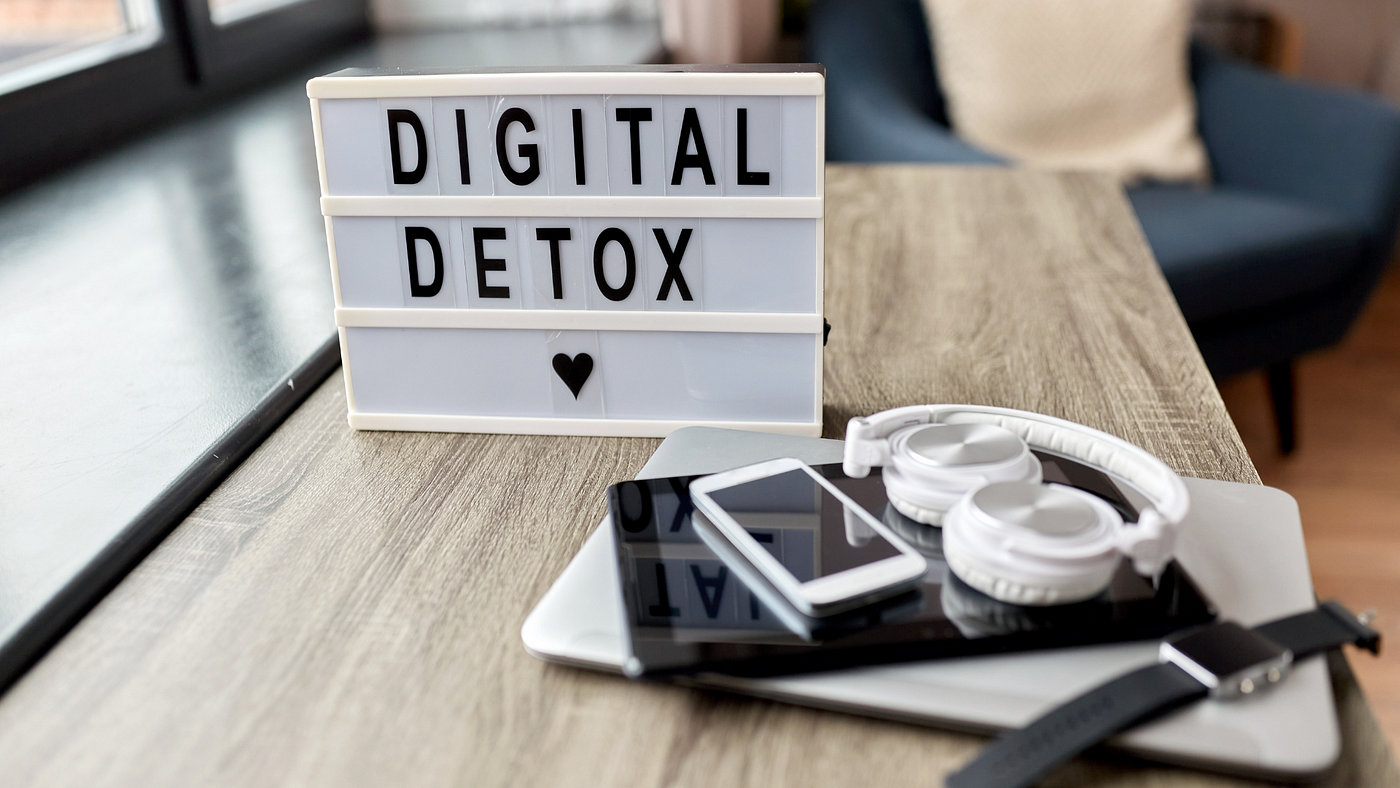Photo Credit to www.thrivefamily.co
A digital detox is something that everyone needs. Almost all of us are guilty of being glued to a gadget for a large chunk of the day – whether it’s for work, entertainment, news, or communication. By “detoxing” from digital devices, we can focus on real-life social interactions and reduce the stress and anxiety that comes from constant connectivity.
There are plenty of potential benefits that can come out of spending time away from your digital devices. In this blog post, let’s go through the advantages of doing a digital detox, how to tell if you need one, and how to properly and effectively do a digital detox.
Benefits of a Digital Detox
Back in the day, the internet was an “escape” from the real world. Now we all need an escape from the internet. Whether we admit it or not, constantly being online is holding us back from living our best life.
What exactly is a digital detox? It is basically a period of time wherein a person takes time off from using digital devices, whether it’s a television, a laptop, a phone, or a tablet. The purpose of a digital detox is to take a break from screen time and constant connectivity, allowing you to reset, recharge, and focus on more meaningful things like engaging in your hobbies, spending time outdoors, or nourishing your relationships.
Taking time off or reducing the use of digital devices can do so much for your mental and physical health. Here are the top benefits of doing a digital detox:
Reduced Anxiety and Stress
Constant connectivity and being on social media can contribute to anxiety and stress in many ways including:
- Fear of Missing Out (FOMO): This stems from seeing friends’ posts about their seemingly exciting lives, which can make you feel anxious or inadequate about missing out on experiences.
- Comparison: We can’t help but compare our life to the lives, achievements, and experiences of the people we follow on social media, leading to feelings of envy and dissatisfaction.
- Negative Feedback: We tend to feel demoralized or disappointed when we receive criticism, negative comments, or a lack of engagement in our posts.
- Cyberbullying: Many people experience negative interactions and even harassment online which causes emotional distress and worsens anxiety or depression.
- Pressure: We are often pressured to present an idealized version of ourselves, leading to stress and anxiety about maintaining a certain image or reputation.
- Information Overload: All the posts, updates, news, and opinions we see on the daily can be overwhelming, which can cause anxiety and stress, especially when it includes distressing or negative content.
Better Relationships
When you reduce or eliminate digital distractions in your daily life, you create more opportunities to focus on the people around you. For example, if you impose a gadget-free dinner, everyone at the table can connect and interact more. Or if you spend time with friends without any of you buried in your phone, you can catch up and chat without distractions.
Enhanced Focus
When you’re always connected online, it’s easy to get distracted from the frequent beeps, notifications, and updates from your devices. It’s hard to work or concentrate on any task if you constantly need to check your social media. If you do a digital detox and spend time away from your gadgets, you’ll notice that you’ll have a clearer mind and able to focus better on any task.
More Control Of Your Time
Did you know that a person checks their phone updates at least 96 times a day? You’ll be surprised at how much extra time you’ll have on your hands for more meaningful things if you take a break from digital connectivity. You’ll be able to focus on hobbies, spend quality time with loved ones, and enjoy the present moment without constant distractions.
Signs That You Need a Social Media Detox
Not sure if you need a digital detox? While all of us do need a break from gadget use, some need a detox more than others. Here are some signs that you need time away from the internet:
- You feel anxious or if you can’t find your phone.
- You check your devices constantly because you feel you are missing out if you don’t.
- You always find yourself staying up late using your phone, sacrificing precious hours of sleep.
- You constantly compare yourself to others on social media.
- You prefer interacting with individuals virtually than in person.
- You care a lot about the likes and comments you get on your social media posts.
- You feel down, anxious, or angry after spending time on social media.
How To Do a Digital Detox
There is no one formula for doing a digital detox. You can detach from the internet and your gadgets for a few hours a day, or take a break from technology for a few days each week. It’s all about setting boundaries and making sure that the use of your devices does more good than harm to both your mental or physical health.
Step 1 – Change Your Behavior
The first step is to determine what the issue is. If you spend too much time on social media, set certain times in a day when they’re off limits. If your gadget usage disrupts your sleep, perhaps you can set a time each night to turn off your phone and try your best to stick to it. It’s important to figure out which activities or habits that you want to change or eliminate.
Step 2 – Set Achievable Goals
Set a realistic goal for yourself based on the issues that you determined. If spending too much on social media is your problem, you can come up with a solution on how you can reduce the use of those sites. Make your goal specific – will it be doable to limit your time on social media sites for 30 minutes a day? Or can you go without logging in for 2 days out of each week? Whatever goals you set, try your best to stick to them.
Step 3 – Make the Time Commitment
It’s not easy to break digital habits so allow yourself to take it slow. Commit to at least two weeks based on the goals you set. Once you’ve achieved your goals, you can set new ones for a longer period until you’ve broken the habit.
Step 4 – Find Support
It’s important to have someone that will encourage you and provide accountability, so sharing your goals with a family member or a trusted friend is a must. They can be there for you to remind you of your targets and they’ll know better not to connect with you virtually during your digital detox.
Step 5 – Track Your Progress
A few days in your digital detox, check in with yourself and take time to reflect about the changes you’ve observed since you started. If you observe positive progress in your habits and you’re in a better place mentally because of the detox, then you’ll be inspired to continue the detox and achieve your goals.
Conclusion
Now that you know how to do a digital detox, you can begin anytime you’re ready. Once you’re successful with your first try, you can consider implementing long term changes to improve your overall well-being.




